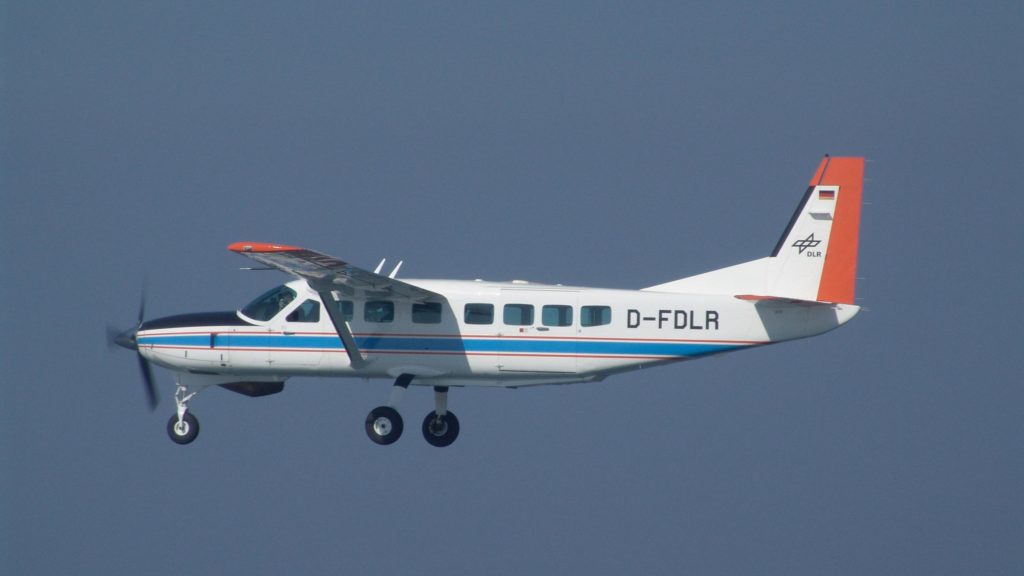Remote sensing, atmospheric research and ‘Flying Auditorium’
DLR’s Cessna 208 B Grand Caravan research aircraft is used for remote sensing, atmospheric research, and is particularly suitable for camera flights. For example, flights with the 3K camera system generate high-resolution aerial images for various applications in traffic management or disaster situations. A laser measurement system (lidar) enables researchers on board the experimental aircraft to measure the concentration of trace gases such as ozone over a wide area.
In 2006 the aircraft was converted into DLR’s ‘Flying Auditorium’, used for the extended training of aeronautical engineers, meteorologists and air transport personnel. Available for this purpose are:
- customised flight projects for optimal learning content
- seven measurement stations for the young researchers, each with a monitor and intercom
- Quicklook for real-time visualisation of the measured and calculated parameters
- force sensors for the control surfaces
- a rudder position sensor
- a full-HD front camera.
In the practical flight course for aerospace students, the performance data of the aircraft in flight are determined together with a flight test engineer, including: climb performance, glide performance, manoeuvre stability (manoeuvre point), longitudinal stability (neutral point), phugoid motions (natural pitching up and pitching down), yaw-roll coupling and stall behaviour.
In addition, meteorology students can measure small-scale meteorological phenomena on board the Cessna during a practical test, which can be experienced at the same time through the Quicklook display. They can explore the structure of the boundary layer, turbulence, föhn waves and valley winds.
Links:
German Aerospace Center
Flight Experiments
Dr. Burkard Wigger · Email burkard.wigger@dlr.de
